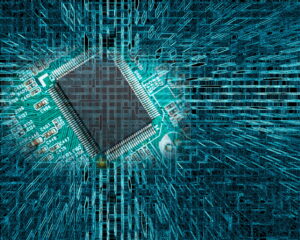AI chip makers are moving at breakneck speed; consequently, staying ahead requires constant innovation. Among them, Nvidia, the undisputed leader in AI chips, has navigated this shift with strategic precision, consistently refining its architecture to meet the growing demands of AI workloads. Furthermore, the company’s evolution from gaming GPUs to AI powerhouses showcases how adaptability and foresight have ultimately cemented its dominance in the industry.
The Shift in AI Computing Needs
AI models have grown exponentially in size and complexity. Initially, from early deep learning networks to today’s trillion-parameter models like GPT-4 and Gemini, the computational requirements have skyrocketed. Consequently, this shift demanded chips that could handle massive amounts of data, while also optimizing memory bandwidth and delivering unprecedented performance per watt—a challenge that AI chip makers, along with developers of AI processors and deep learning chips, continue to tackle through advancements in AI hardware.
Key Trends Driving Nvidia’s AI Chip Evolution:
- Rise of Large-Scale AI Models – Training AI now requires petaflops of compute power, and inference workloads are increasing in scale.
- Power Efficiency and Optimization – Data centers are struggling with power constraints, making energy efficiency a key focus.
- Custom AI Architectures – Companies like Google (TPUs) and AMD (MI300) are pushing Nvidia to innovate further.
- Enterprise and Cloud AI Expansion – AI is no longer limited to research labs; enterprises demand robust AI infrastructure.
Nvidia’s Strategy: Key Innovations in AI Chips
To maintain its lead, Nvidia has continuously pushed the envelope, launching groundbreaking chip architectures tailored to AI workloads. Specifically, below are some major adaptations the company has implemented.

- Hopper Architecture: Optimized for AI
For example, the Hopper architecture, introduced with the H100 GPU, was designed for large-scale AI training and inference. As a result, this innovation by leading AI chip makers represents a breakthrough in AI hardware. Moreover, featuring Transformer Engine support, it accelerates models like GPT, significantly reducing training time and power consumption, making it one of the most efficient deep learning chips among modern AI processors.
Key Upgrades in Hopper:
- FP8 Precision Computing – Improves AI model performance with lower energy usage.
- NVLink 4.0 – Enhances multi-GPU communication for faster distributed computing.
- Confidential Computing – Security features tailored for enterprise AI deployments.
- Blackwell (B100) & Next-Gen AI Chips
Looking ahead, Nvidia is already working on its next AI architecture, codenamed Blackwell, set to launch in 2025. As part of ongoing innovation among AI chip makers, this architecture aims to further boost efficiency by integrating cutting-edge packaging technology, advanced memory compression, and new AI accelerators. In particular, Blackwell represents a leap forward in AI hardware, offering greater performance for future AI processors and deep learning chips.
- AI-Specific GPUs & Custom Solutions
Currently, Nvidia is offering AI-specific GPUs like the L40S, designed for inference and enterprise applications. In addition, they are developing custom AI accelerators for major cloud providers like AWS and Google Cloud.
Performance & Market Leadership: The Numbers Speak
Nvidia’s relentless innovation has translated into market dominance. The following tables highlight the company’s growth and chip performance metrics:
Nvidia’s AI GPU Market Share (2020-2024)
| Year | Nvidia AI GPU Market Share | Competitors (AMD, Intel, Google TPUs) |
| 2020 | 80% | 20% |
| 2021 | 82% | 18% |
| 2022 | 84% | 16% |
| 2023 | 88% | 12% |
| 2024 | 90% | 10% |
AI Chip Performance Comparison (Latest AI GPUs)
| GPU Model | Architecture | FP8 Performance (TFLOPS) | Power Efficiency (TFLOPS/Watt) |
| Nvidia H100 | Hopper | 1,000+ | 20+ |
| AMD MI300 | CDNA3 | 850+ | 18+ |
| Google TPU v5 | Custom TPU | 900+ | 19+ |
The Road Ahead: Nvidia’s AI-First Future
Nvidia’s ability to anticipate industry shifts and rapidly adapt has made it an AI powerhouse. The company is moving beyond just GPUs, investing in AI software (CUDA & TensorRT), networking (Infiniband), and full-stack AI solutions (DGX Systems). As AI continues to evolve, Nvidia is positioning itself not just as a hardware provider but as the backbone of AI innovation.
The AI revolution is just beginning, and with Nvidia at the helm, the future promises even greater breakthroughs. Whether through new AI chips, advanced networking solutions, or full-stack AI infrastructure, one thing is clear—Nvidia isn’t just keeping up; it’s leading the way.

